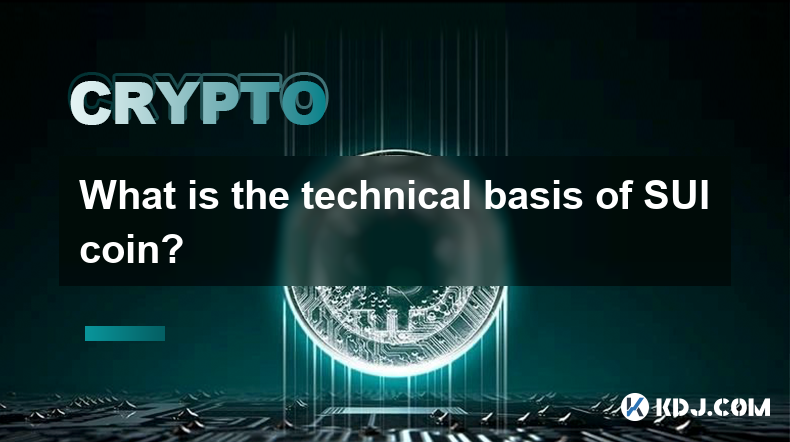-
 Bitcoin
Bitcoin $101,898.5005
-0.75% -
 Ethereum
Ethereum $2,258.1125
-1.07% -
 Tether USDt
Tether USDt $1.0004
0.01% -
 XRP
XRP $2.0178
-2.93% -
 BNB
BNB $624.0243
-1.53% -
 Solana
Solana $134.3298
-0.90% -
 USDC
USDC $0.9999
0.01% -
 TRON
TRON $0.2675
-2.05% -
 Dogecoin
Dogecoin $0.1538
-1.96% -
 Cardano
Cardano $0.5482
-1.11% -
 Hyperliquid
Hyperliquid $35.5636
5.45% -
 Bitcoin Cash
Bitcoin Cash $453.4902
-1.66% -
 Sui
Sui $2.5134
-2.97% -
 UNUS SED LEO
UNUS SED LEO $9.1292
1.77% -
 Chainlink
Chainlink $11.8457
-1.60% -
 Stellar
Stellar $0.2312
-2.73% -
 Avalanche
Avalanche $16.9721
0.29% -
 Toncoin
Toncoin $2.7549
-3.82% -
 Shiba Inu
Shiba Inu $0.0...01081
-1.10% -
 Litecoin
Litecoin $80.8250
-0.71% -
 Hedera
Hedera $0.1374
0.21% -
 Monero
Monero $305.4827
-2.36% -
 Ethena USDe
Ethena USDe $1.0006
0.00% -
 Dai
Dai $1.0000
-0.01% -
 Polkadot
Polkadot $3.2085
-3.12% -
 Bitget Token
Bitget Token $4.0845
-3.13% -
 Uniswap
Uniswap $6.3353
-1.63% -
 Pi
Pi $0.5085
-0.70% -
 Pepe
Pepe $0.0...08913
-3.82% -
 Aave
Aave $232.7090
-0.58%
What is the technical basis of SUI coin?
SUI's Layer-1 blockchain uses a novel consensus mechanism and object-oriented architecture (Move language) for high throughput, low latency, and improved scalability via data availability sampling and sharding, efficiently managing concurrent transactions.
Mar 22, 2025 at 03:15 am

Key Points:
- SUI's technical foundation rests on a novel consensus mechanism and a layer-1 blockchain designed for high throughput and low latency.
- The Move programming language plays a crucial role in ensuring security and enabling the development of complex smart contracts.
- SUI's architecture emphasizes object-oriented programming, improving efficiency and scalability compared to traditional blockchain designs.
- Data availability and efficient sharding are core components of SUI's scalability solution.
- The SUI team has developed innovative solutions for handling transaction concurrency and minimizing bottlenecks.
What is the technical basis of SUI coin?
SUI, a new layer-1 blockchain, distinguishes itself through a unique technological approach designed to address scalability and efficiency challenges prevalent in the cryptocurrency landscape. Its foundation isn't simply a rehash of existing technologies but a carefully constructed system leveraging novel techniques and existing best practices. Understanding this foundation is crucial to appreciating SUI's potential and limitations.
The core of SUI's technical innovation lies in its novel consensus mechanism and its object-oriented programming paradigm. Unlike Proof-of-Work (PoW) or even some Proof-of-Stake (PoS) systems, SUI employs a sophisticated consensus mechanism that prioritizes both security and speed. This mechanism allows for a high degree of transaction throughput while maintaining a low latency, critical for a user-friendly experience.
Central to SUI's functionality is the Move programming language. Developed initially for Diem (formerly Libra), Move is a resource-oriented language designed for secure smart contract development. Its emphasis on formal verification and its ability to manage digital assets effectively make it a powerful tool for building decentralized applications (dApps) on the SUI blockchain. This contributes significantly to the overall security and robustness of the platform.
SUI's architecture embraces an object-oriented approach. This contrasts with the more traditional account-based models used by many blockchains. The object-oriented design allows for more efficient management of data and resources, leading to improved scalability and performance. This design choice is a fundamental aspect of its ability to handle a high volume of transactions concurrently.
Scalability is a major focus for SUI. To achieve this, the platform incorporates data availability sampling and sharding. Data availability sampling ensures that even if some nodes fail, sufficient data remains available to validate transactions. Sharding, the process of dividing the blockchain into smaller, more manageable pieces, significantly reduces the computational load on individual nodes, enabling higher transaction throughput.
The challenges of managing concurrent transactions are significant in any blockchain system. SUI addresses this through a sophisticated system designed to minimize bottlenecks and ensure fairness. Its architecture incorporates features that prioritize and efficiently process transactions, avoiding the delays and inefficiencies seen in some other blockchain networks. This careful engineering of concurrency management is vital to SUI's performance claims.
The development team behind SUI has invested significant effort in optimizing various aspects of the blockchain's architecture. From the choice of programming language to the design of the consensus mechanism and the implementation of sharding, every element is carefully considered to maximize efficiency and minimize vulnerabilities. This holistic approach is key to the project's ambitions.
Beyond the core technologies, SUI's technical foundation also encompasses robust security measures. These measures are designed to protect against various threats, including attacks aimed at exploiting vulnerabilities in the smart contract code or compromising the integrity of the blockchain itself. The combination of a secure programming language and sophisticated security protocols is crucial to maintaining the trust and reliability of the SUI ecosystem.
The ongoing development and refinement of SUI's technical basis is a continuous process. The team actively monitors performance, identifies areas for improvement, and implements updates to enhance the platform's capabilities. This commitment to ongoing improvement is essential for a blockchain project to remain competitive and relevant in the rapidly evolving cryptocurrency landscape.
Frequently Asked Questions:
Q: What makes SUI's consensus mechanism different?
A: SUI uses a novel consensus mechanism that prioritizes both speed and security, unlike traditional PoW or even some PoS systems. It aims for high transaction throughput with low latency. The specifics are not publicly detailed in exhaustive depth, but it leverages advanced techniques to achieve this balance.
Q: How does Move programming language contribute to SUI's security?
A: Move's resource-oriented design allows for fine-grained control over digital assets, reducing the risk of vulnerabilities and exploits often found in other smart contract languages. Its emphasis on formal verification helps ensure the correctness and security of smart contracts.
Q: How does SUI achieve scalability?
A: SUI employs data availability sampling and sharding. Sharding divides the blockchain into smaller parts, reducing the workload on individual nodes, while data availability sampling ensures transaction validation even with node failures.
Q: What are the advantages of SUI's object-oriented architecture?
A: The object-oriented approach leads to more efficient data management and resource allocation compared to account-based models, improving scalability and performance by allowing for better handling of concurrent transactions.
Q: How does SUI handle transaction concurrency?
A: SUI employs sophisticated techniques to prioritize and efficiently process transactions, minimizing bottlenecks and ensuring fairness, unlike some blockchains that struggle with high transaction volumes. The specific algorithms are not publicly detailed in their entirety.
Disclaimer:info@kdj.com
The information provided is not trading advice. kdj.com does not assume any responsibility for any investments made based on the information provided in this article. Cryptocurrencies are highly volatile and it is highly recommended that you invest with caution after thorough research!
If you believe that the content used on this website infringes your copyright, please contact us immediately (info@kdj.com) and we will delete it promptly.
- DOGE Recovery Amid US-Iran Tensions: A Market Rollercoaster
- 2025-06-23 20:45:13
- Fiserv, PayPal, and Stablecoins: A New Era of Interoperability?
- 2025-06-23 20:45:13
- Hacken Token's Wild Ride: Minting Exploit and the Cryptocurrency Crash
- 2025-06-23 21:05:12
- Dogecoin, Cloud Mining, and Blockchain: A Meme's Evolution
- 2025-06-23 21:25:12
- Layer 1 Turmoil: CEO Ousted Amidst Scam Allegations
- 2025-06-23 21:05:12
- Solana's Stumble: Price Crash and Network Exodus?
- 2025-06-23 21:25:12
Related knowledge

How to customize USDT TRC20 mining fees? Flexible adjustment tutorial
Jun 13,2025 at 01:42am
Understanding USDT TRC20 Mining FeesMining fees on the TRON (TRC20) network are essential for processing transactions. Unlike Bitcoin or Ethereum, where miners directly validate transactions, TRON uses a delegated proof-of-stake (DPoS) mechanism. However, users still need to pay bandwidth and energy fees, which are collectively referred to as 'mining fe...

USDT TRC20 transaction is stuck? Solution summary
Jun 14,2025 at 11:15pm
Understanding USDT TRC20 TransactionsWhen users mention that a USDT TRC20 transaction is stuck, they typically refer to a situation where the transfer of Tether (USDT) on the TRON blockchain has not been confirmed for an extended period. This issue may arise due to various reasons such as network congestion, insufficient transaction fees, or wallet-rela...

How to cancel USDT TRC20 unconfirmed transactions? Operation guide
Jun 13,2025 at 11:01pm
Understanding USDT TRC20 Unconfirmed TransactionsWhen dealing with USDT TRC20 transactions, it’s crucial to understand what an unconfirmed transaction means. An unconfirmed transaction is one that has been broadcasted to the blockchain network but hasn’t yet been included in a block. This typically occurs due to low transaction fees or network congestio...

How to check USDT TRC20 balance? Introduction to multiple query methods
Jun 21,2025 at 02:42am
Understanding USDT TRC20 and Its ImportanceUSDT (Tether) is one of the most widely used stablecoins in the cryptocurrency market. It exists on multiple blockchain networks, including TRC20, which operates on the Tron (TRX) network. Checking your USDT TRC20 balance accurately is crucial for users who hold or transact with this asset. Whether you're sendi...

What to do if USDT TRC20 transfers are congested? Speed up trading skills
Jun 13,2025 at 09:56am
Understanding USDT TRC20 Transfer CongestionWhen transferring USDT TRC20, users may occasionally experience delays or congestion. This typically occurs due to network overload on the TRON blockchain, which hosts the TRC20 version of Tether. Unlike the ERC20 variant (which runs on Ethereum), TRC20 transactions are generally faster and cheaper, but during...

The relationship between USDT TRC20 and TRON chain: technical background analysis
Jun 12,2025 at 01:28pm
What is USDT TRC20?USDT TRC20 refers to the Tether (USDT) token issued on the TRON blockchain using the TRC-20 standard. Unlike the more commonly known ERC-20 version of USDT (which runs on Ethereum), the TRC-20 variant leverages the TRON network's infrastructure for faster and cheaper transactions. The emergence of this version came as part of Tether’s...

How to customize USDT TRC20 mining fees? Flexible adjustment tutorial
Jun 13,2025 at 01:42am
Understanding USDT TRC20 Mining FeesMining fees on the TRON (TRC20) network are essential for processing transactions. Unlike Bitcoin or Ethereum, where miners directly validate transactions, TRON uses a delegated proof-of-stake (DPoS) mechanism. However, users still need to pay bandwidth and energy fees, which are collectively referred to as 'mining fe...

USDT TRC20 transaction is stuck? Solution summary
Jun 14,2025 at 11:15pm
Understanding USDT TRC20 TransactionsWhen users mention that a USDT TRC20 transaction is stuck, they typically refer to a situation where the transfer of Tether (USDT) on the TRON blockchain has not been confirmed for an extended period. This issue may arise due to various reasons such as network congestion, insufficient transaction fees, or wallet-rela...

How to cancel USDT TRC20 unconfirmed transactions? Operation guide
Jun 13,2025 at 11:01pm
Understanding USDT TRC20 Unconfirmed TransactionsWhen dealing with USDT TRC20 transactions, it’s crucial to understand what an unconfirmed transaction means. An unconfirmed transaction is one that has been broadcasted to the blockchain network but hasn’t yet been included in a block. This typically occurs due to low transaction fees or network congestio...

How to check USDT TRC20 balance? Introduction to multiple query methods
Jun 21,2025 at 02:42am
Understanding USDT TRC20 and Its ImportanceUSDT (Tether) is one of the most widely used stablecoins in the cryptocurrency market. It exists on multiple blockchain networks, including TRC20, which operates on the Tron (TRX) network. Checking your USDT TRC20 balance accurately is crucial for users who hold or transact with this asset. Whether you're sendi...

What to do if USDT TRC20 transfers are congested? Speed up trading skills
Jun 13,2025 at 09:56am
Understanding USDT TRC20 Transfer CongestionWhen transferring USDT TRC20, users may occasionally experience delays or congestion. This typically occurs due to network overload on the TRON blockchain, which hosts the TRC20 version of Tether. Unlike the ERC20 variant (which runs on Ethereum), TRC20 transactions are generally faster and cheaper, but during...

The relationship between USDT TRC20 and TRON chain: technical background analysis
Jun 12,2025 at 01:28pm
What is USDT TRC20?USDT TRC20 refers to the Tether (USDT) token issued on the TRON blockchain using the TRC-20 standard. Unlike the more commonly known ERC-20 version of USDT (which runs on Ethereum), the TRC-20 variant leverages the TRON network's infrastructure for faster and cheaper transactions. The emergence of this version came as part of Tether’s...
See all articles
























































































